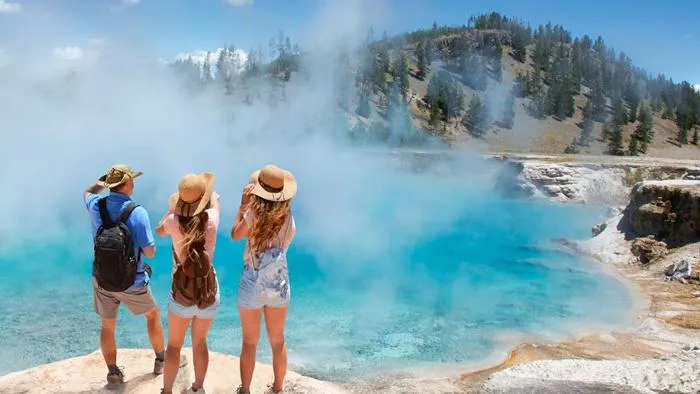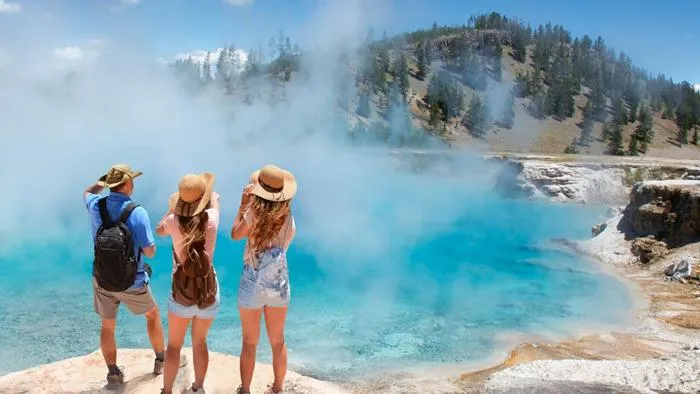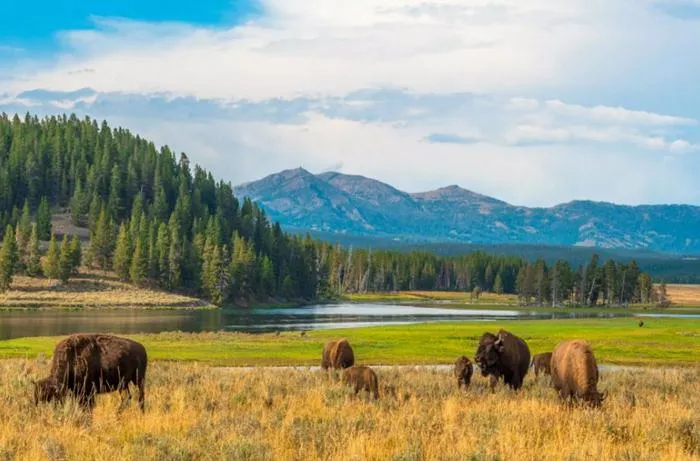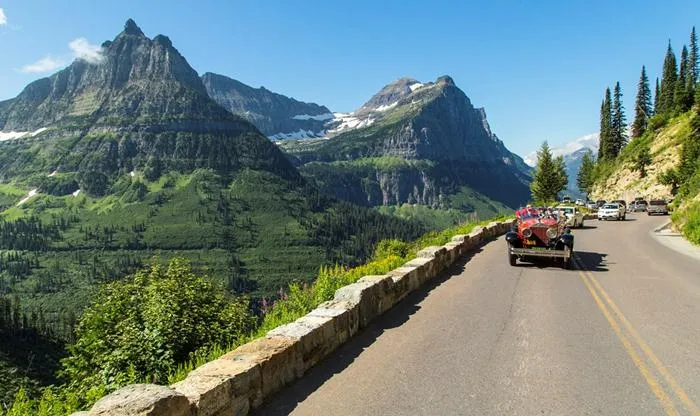Montana, nicknamed “Big Sky Country,” is renowned not only for its vast skies and sprawling fields but also as a haven for wilderness explorers. Among Montana’s numerous attractions, the Bighorn Mountains stand out as a gem, particularly appealing to those passionate about trekking and summiting peaks. This article provides a detailed trekking guide to the Bighorn Mountains, helping you prepare for an unforgettable journey to discover the majestic beauty of one of America’s most pristine mountain ranges.
The Bighorn Mountains, stretching across both Montana and Wyoming, are part of the عظیم Rocky Mountains, famous for their diverse landscapes ranging from expansive pine forests and high-altitude meadows to magnificent granite peaks. This area is not only home to various wildlife species such as Bighorn sheep, elk, and black bears but also an ideal destination for outdoor activities like climbing, fishing, and especially trekking. Trekking in the Bighorn Mountains is not just a physical challenge but also an opportunity to immerse yourself in nature, enjoy tranquility, and admire panoramic views of Montana from above.
Why Bighorn Mountains Are an Ideal Trekking Destination?
The Bighorn Mountains offer a unique and distinct trekking experience compared to many other mountain ranges in the US. Here are reasons why the Bighorn Mountains are an ideal trekking destination:
- Pristine and Diverse Beauty: The Bighorn Mountains preserve their wild natural beauty with a rich ecosystem. You will traverse ancient pine and fir forests, alpine meadows vibrant with wildflowers in the summer, and crystal-clear streams flowing gently. As you ascend, the scenery becomes even more majestic with towering cliffs and expansive panoramic views.
- Varied Challenge Levels: The Bighorn Mountains offer numerous trekking trails with varying difficulty levels, suitable for everyone from beginners to experienced trekkers. You can choose short, easy day hikes or multi-day, challenging expeditions to conquer the peaks.
- Wildlife Viewing Opportunities: The Bighorn Mountains are an ideal habitat for many wildlife species. During your trek, you have the chance to observe Bighorn sheep, the iconic animal of the range, along with deer, elk, bears, and many rare bird species.
- Fewer Crowds: Compared to other famous national parks, the Bighorn Mountains are less known, meaning you’ll enjoy a peaceful environment away from the noise and crowds of tourists, especially during peak season.

Discover the untouched beauty of Montana on your Bighorn Mountains trekking adventure.
Choosing the Right Trekking Trail in the Bighorn Mountains
To have a successful and memorable trekking trip in the Bighorn Mountains, selecting the right trail is crucial. Here are some suggestions for popular and highly-rated trekking trails:
- Cloud Peak Wilderness Trails: This is the most famous wilderness area in the Bighorn Mountains, home to many peaks over 12,000 feet (3,658 meters), including Cloud Peak, the highest peak in the range. Trekking trails in Cloud Peak Wilderness are generally challenging, suitable for experienced trekkers seeking a tough adventure. The West Tensleep Trail is a popular option to access the Cloud Peak area, offering diverse and pristine landscapes.
- Medicine Wheel Passage Trails: The Medicine Wheel Passage area is famous for the Medicine Wheel National Historic Landmark, an ancient stone circle dating back hundreds of years, used by Native Americans for ceremonial and astronomical purposes. Trekking trails here are typically of medium difficulty, combining nature exploration with cultural and historical discovery. The Medicine Mountain Trail leads to the summit of Medicine Mountain, where you can admire panoramic views of the area and the Medicine Wheel landmark from a distance.
- Bighorn National Forest Scenic Byway Trails: If you want to combine trekking with sightseeing, the Bighorn National Forest Scenic Byway is an excellent choice. This is the most beautiful driving route in the Bighorn Mountains, passing through many scenic viewpoints and short hiking trails. You can stop at spots like Steamboat Point Trail or Black Mountain Lookout Trail for short day hikes with impressive panoramic views.
When choosing a trekking trail, carefully consider the length, difficulty, elevation gain, estimated time, and weather conditions. Consult topographic maps, information from reputable travel websites, and experiences of those who have trekked in the Bighorn Mountains to make the best decision for your abilities and preferences.

Explore pristine lakes and majestic landscapes along the trekking trails.
Thorough Preparation for Your Bighorn Mountains Trekking Trip
Trekking in the Bighorn Mountains requires thorough preparation to ensure safety and the best possible experience. Here are essential factors to prepare before starting your journey:
Essential Trekking Gear
- Trekking Shoes: Choose specialized shoes with good grip, waterproofness, and comfort for long-distance hiking on rough terrain.
- Trekking Backpack: Select a backpack of appropriate size for the duration of your trek, large enough to carry personal items, water, food, and necessary equipment.
- Clothing: Prepare specialized trekking clothing that is breathable, quick-drying, and provides good insulation. Bring a windproof, waterproof jacket and thermal layers to cope with changing weather conditions in the high mountains.
- Trekking Poles: Trekking poles help reduce pressure on your knees, enhance stability, and assist movement on steep terrain.
- Water Bottles and Water Filter/Purifier: Ensure you carry enough water for the entire journey and bring a water filter or water purification tablets to use natural water sources if needed.
- Snacks: Pack energy-rich snacks such as granola bars, dried fruit, nuts, and chocolate to replenish energy during trekking.
- Map, Compass, or GPS: Even with marked trails, you should still bring a map, compass, or GPS device to navigate and track your location.
- Flashlight or Headlamp: Necessary for trekking in the evening or when passing through dark areas.
- Sunscreen, Hat, Sunglasses: Protect your skin and eyes from the harmful effects of the sun at high altitudes.
- Personal First-Aid Kit: Carry basic medical supplies such as bandages, antiseptic wipes, pain relievers, and personal medications.
Fitness and Health
Trekking in the Bighorn Mountains demands good physical fitness, especially for multi-day treks and high-altitude trails. Train your fitness before the trip, focusing on exercises that improve endurance, leg strength, and altitude tolerance. If you have any health issues, consult your doctor before planning a trekking trip.
Permits and Regulations
Some areas in the Bighorn Mountains may require trekking or camping permits, especially in the Cloud Peak Wilderness area. Research the necessary regulations and permits carefully before you go and ensure compliance to avoid trouble.
Best Time to Trek
The best time to trek in the Bighorn Mountains is from mid-June to late September. In summer, the weather is warm and pleasant, the trails are dry, and wildflowers bloom everywhere. However, you should also prepare for the possibility of sudden showers or thunderstorms, especially in the afternoon. Autumn (September – October) is also a good option with cool weather and vibrant fall foliage, but be aware that temperatures can drop low at night.

Prepare adequate gear and physical fitness to conquer the Bighorn Mountains.
Unforgettable Experiences Atop the Bighorn Mountains
Trekking to the summit of the Bighorn Mountains will bring you memorable and unforgettable experiences:
- Admire Majestic Scenery: From the mountain peaks, you will witness endless panoramic views of the Bighorn Mountains, with rolling ranges, deep valleys, and turquoise lakes. On clear days, visibility can extend hundreds of miles, encompassing the vast plains of Montana.
- Explore Diverse Ecosystems: During your trek, you will traverse various forest types, from pine and fir forests at lower elevations to shrub forests and alpine meadows at higher altitudes. Each forest type hosts unique flora and fauna, creating rich biodiversity in the Bighorn Mountains.
- Challenge Yourself: Trekking in the Bighorn Mountains is not just a physical activity but also a test of will and perseverance. Overcoming rocky slopes, rough trails, and harsh weather conditions will help you discover your limits and feel proud of conquering the summit.
- Connect with Nature: Immersing yourself in the wilderness of the Bighorn Mountains is an opportunity to escape the noisy, stressful daily life, rediscover inner peace, and appreciate the wonders of the natural world.

Enjoy the majestic and pristine natural beauty at the summit of the Bighorn Mountains.
Useful Tips and Advice for Trekking the Bighorn Mountains
- Go in a Group: Trekking in a group is safer, especially when venturing into wilderness areas or challenging trails.
- Inform Someone of Your Itinerary: Let family or friends know your trekking itinerary, including the trail, estimated time, and return time.
- Pay Attention to Weather: Monitor the weather forecast before and during your trek to prepare accordingly. Mountain weather can change rapidly, so always be vigilant.
- Hike Slowly and Rest Adequately: Avoid trying to hike too fast; hike slowly and rest frequently to prevent exhaustion and altitude sickness.
- Drink Enough Water: Drink water regularly, even if you don’t feel thirsty, to prevent dehydration and maintain energy.
- Adhere to “Leave No Trace” Principles: Pack out all your trash, do not damage vegetation, do not disturb wildlife, and maintain environmental hygiene.
- Enjoy the Journey: Don’t forget to take time to enjoy the scenery, breathe in the fresh air, and capture memorable moments throughout your trekking journey.
Conclusion
Trekking to the summit of the Bighorn Mountains is a fantastic travel experience for those who love wilderness and want to challenge themselves. With thorough preparation and an adventurous spirit, you will have a safe, memorable trekking journey and fully discover the majestic beauty of this mountain range. Plan your Bighorn Mountains trekking trip today and get ready to conquer new heights!